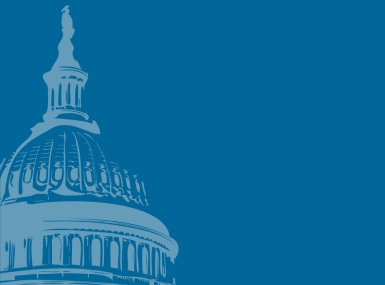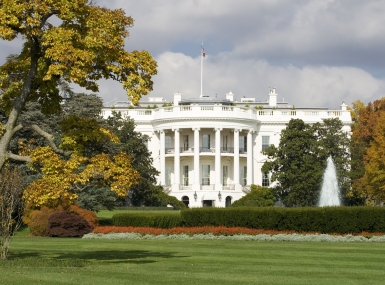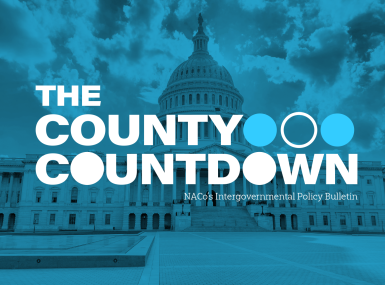H.R. 1 and the Supplemental Nutrition Assistance Program (SNAP): What Counties Should Know

Author

Julia Cortina
Upcoming Events
Related News
Regardless of population size, geography and available resources, counties are deeply invested in our residents’ health and well-being. Every day, we provide services that help vulnerable individuals and families thrive, functioning as an integral part of the federal, state and local partnership in human service delivery.
Jump to Section
Counties, regardless of size, location or resources, are deeply committed to promoting the health and well-being of residents. Each day, counties deliver essential services that support vulnerable individuals and families, serving as a vital partner in the federal, state and local human services delivery system. County responsibilities vary by program and may include contributing administrative funding, determining eligibility, delivering services or contracting with providers, managing program funds, meeting Maintenance of Effort (MOE) and nonfederal share requirements, collecting data, enrolling participants and more.
On February 25, NACo joined a bipartisan coalition of national organizations representing states, counties and cities in sending a letter to congressional leadership expressing concern over proposed changes to SNAP, TANF and SSBG. The letter followed recent budget reconciliation proposals that would enact significant cuts to these programs. On May 21, NACo sent a letter to congressional leadership expressing concern over the proposed changes regarding SNAP to shift benefit and administrative costs through to counties and states. On June 5, NACo joined five state associations of counties in supporting over a dozen county leaders visiting Capitol Hill to advocate for county priorities and express concerns about the impacts on counties of proposed administrative and funding changes to SNAP.
On July 4, the One Big Beautiful Bill Act (P.L. 119-25) was signed into law, enacting major cost shifts to counties and states and making changes to how the program operates. This resource outlines the changes made to SNAP, and the anticipated impacts on county governments.
How do changes to SNAP affect counties?
Counties and the Supplemental Nutrition Assistance Program
As the largest federal nutrition program reaching approximately 42 million households, SNAP is a foundational part of the social safety net and has a significant impact on combating hunger and poverty in low-income households. Counties are responsible for administering the program in ten states, California, Colorado, Minnesota, New Jersey, New York, North Carolina, North Dakota, Ohio, Virginia and Wisconsin. These states represent approximately 34 percent of total participants, or 14.6 million people.
In North Carolina, New York and New Jersey, counties must meet the entire 50 percent non-federal match requirement for SNAP administrative funds, while in California, Colorado, Minnesota, Ohio, Virginia and Wisconsin, the counties share this financial obligation with the state. Only in North Dakota does the state entirely fund this requirement.
One Big Beautiful Bill Act (P.L. 119-21) Analysis
The One Big Beautiful Bill Act (H.R. 1) (P.L. 119-21) was signed into law on July 4, and reduces federal funding for SNAP through FY 2034. Key highlights can be found below:
Administrative Cost Shift
Currently, the federal government covers approximately 50 percent of the administrative costs for SNAP. The OBBBA reduces the federal contribution to 25 percent and increases the non-federal share to 75 percent, starting in FY 2027. In 9 of the 10 county-administered states, counties will have to contribute more to administrative costs, or fully cover the administrative cost shift.
Benefit Cost Shift and Payment Error Rates
Since the program’s establishment in 1964, the federal government has fully funded SNAP benefits. Under H.R. 1, states with payment error rates above 6 percent will pay a cost share that covers 5 to 15 percent of benefits. States with a payment error rate under 6 percent will not be responsible for benefits.
- Payment Error Rate: States may use either their FY 2025 or FY 2026 payment error rate to determine their required match for FY 2028. For FY 2029 and beyond, the cost share is based on the payment error rate from three fiscal years prior.
- Delayed Implementation: Generally, implementation will begin in FY 2028. However, if the payment error rate of a state in FY 2025 multiplied by 1.5 is equal to or above 20 percent, the implementation date will be FY 2029. If a state meets this criteria in FY 2026, implementation is pushed to FY 2030. Ultimately, states with the highest error rates will have delayed implementation.
This provision raises major concerns for counties with the potential of states passing penalties to county governments, even when local offices are fulfilling their obligations to track and monitor recipients and benefit payments.
Work Requirements
Under current law, Able-Bodied Adults Without Dependents (ABAWDs) must work at least 80 hours a month or participate in qualifying programs to be eligible for SNAP benefits, and are limited to receiving SNAP benefits up to three months for failure to comply with these requirements. H.R. 1 makes several changes to these requirements:
- Expanded Definition: Expands the definition of ABAWDs to include adults aged 18 to 64 (an increase from the current range of 18 to 54) and to those with dependents ages 14 and up (previously, those with dependents were excluded).
- Exemptions: Strikes exemptions for veterans, individuals experiencing homelessness, and former foster youth.
- Waivers: Reduces the flexibility for states to waive ABAWD work requirements to only areas with unemployment rates over 10 percent (with exceptions for Alaska and Hawaii), even if local economic conditions warrant flexibility.
Under the expanded definition and less flexibility for waivers, more people will be subject to work requirements, increasing the administrative burden on counties.
October 3, 2025 Guidance (ABAWD Exceptions): In this guidance, FNS states that the changes to ABAWD work requirements were effective upon the enactment of H.R. 1, and that state agencies must provide households with written notice regarding these changes. Additionally, the guidance states that starting on November 1, agencies that administer benefits incorrectly to the expanded ABAWD population will have those errors counted in their Quality Control review. The SNAP Quality Control system measures how accurately SNAP state and county agencies determine a household’s eligibility and benefit amount, and includes payment error rates.
Nutrition Education and Obesity Grant Prevention Program (SNAP-Ed)
SNAP-Ed was a nutrition education program that helped individuals learn and develop skills to make healthy food choices and add physical activity into their daily lives. H.R. 1 eliminates funding for the SNAP-Ed program beginning in FY 2026.
August 13, 2025 Guidance: FNS is requesting state agencies provide notification of intent to close their FY 2025 SNAP-Ed grant and return unexpended grant funding. State agencies that do not wish to terminate their remaining FY 2025 SNAP-Ed funds must submit a state plan by Aug. 15, 2025, or no later than Aug. 31, 2025, if an extension is requested and approved. This should include an intent to expend funds by Sept. 30, 2026.
Thrifty Food Plan
Maximum monthly SNAP benefit allotments are tied to the cost of purchasing a nutritionally adequate, low-cost diet as measured by the USDA-created and calculated market basket, known as the Thrifty Food Plan (TFP). Separate from reevaluating the contents included in the market basket, the TFP is adjusted for inflation annually using the Consumer Price Index for all Urban Consumers (CPI-U). Key changes to the TFP include:
- Market Basket Revaluation: Revokes the 2018 Farm Bills' mandatory revaluation every five years of consumption patterns and dietary guidance to calculate the TFP, leaving it USDA's discretion.
- Adjustments for Inflation: USDA will remain required to annually adjust the TFP's value for inflation.
Excess Shelter Expense Deduction
When determining net income, households can use the SNAP Excess Shelter Expense Deduction to claim a variety of shelter costs, including rent, utilities, and other basic needs. Given that actual utility costs often fluctuate and are difficult to determine, states can allow households to use a fixed amount that is determined by the state, called a Standard Utility Allowance (SUAs). Under OBBBA, changes include:
- Energy assistance: In households without an elderly or disabled member, Low Income Home Energy Assistance Program (LIHEAP) payments can no longer be used to qualify for the SUA.
- Internet Expenses: Internet costs can no longer be used when calculating excess shelter expense deductions.
August 15, 2025 Guidance: FNS released a memo directing state agencies not to use internet costs when calculating their FY 2026 SUA values.
Eligibility for Non-Citizens
Lawful Permanent Residents (LPR), Cuban-Haitian entrants, and Compacts of Free Association (COFA) migrants are the only noncitizens eligible for SNAP. Previously, refugees, individuals granted asylum and trafficking victims were eligible.
October 31, 2025 Guidance: FNS released guidance stating that all changes to non-citizen eligibility took effect immediately upon passage of the legislation, with the hold harmless period expiring November 1, 2025.
Shifting SNAP food benefit costs to states
Since SNAP was established nearly 50 years ago, the federal government has fully funded food benefits, while states and counties—responsible for eligibility and benefit distribution—have shared about half the administrative costs. The One Big Beautiful Bill Act requires states with payment error rates above 6 percent to pay a share of 5 to 15 percent of SNAP benefits. The chart below illustrates how even changes to SNAP benefit funding could affect state budgets.
Contact






